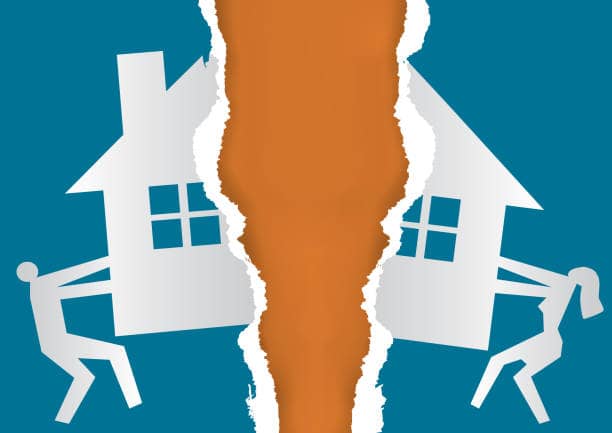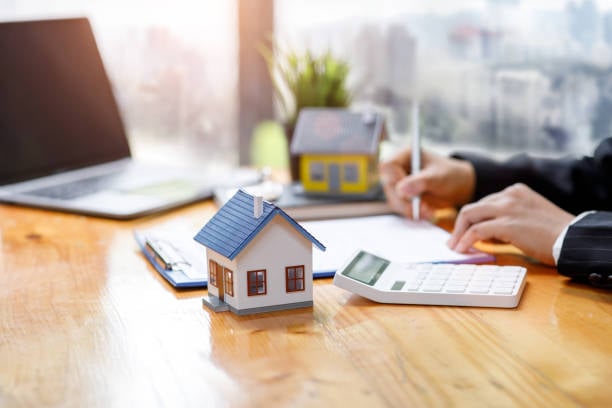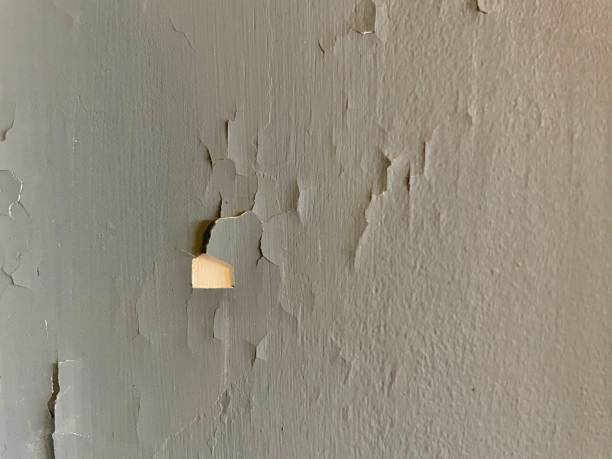How Much Does it Cost to Stage a House for Sale? Average Fees & Prices Explained
How much does it cost to stage a house? That depends on a range of variables. For example, light staging for the average home that includes a consultation along with some active staging in a few key areas but that doesn’t go any further than that and doesn’t include the rental of any furniture, art, or props will be less pricey than full-service staging.
Most full-service companies employ minimum staging charges that begin at $6,000 to $7,000. In other words, even minimal staging is an investment that you’ll want to carefully consider before accepting a price quote.
Table of Contents
How much does it cost to stage a house for sale?
House staging costs can vary considerably. On average, staging speeds up home sales and brings higher prices, but there are no guarantees. The longer your home is on the market, the more costly staging becomes, and something as common as a sale that falls through can significantly decrease your ROI.
Home staging cost per square foot
What is the cost to stage a 2,000 sq ft house? And really, what is the point? These are both valid questions, and the truth is that a well-staged home can sell much more quickly than a home that isn’t staged and can bring a considerably higher price. Some home stagers charge per square foot, and factors like the following affect the amount they charge:
- Your home’s location
- Your home’s size
- The size of the area you want staged
- Your home’s list price
- The length of your initial staging contract
- The accessibility of the space being staged
Experienced and highly effective home stagers generally charge from $3 to $5 per square foot, depending upon factors such as those listed above, the overall effect you are going for, and beyond. For a 2,000 square foot home, in other words, you can expect to spend about $6,000 to $10,000 for a 60-day contract. It is important to note that most staging companies employ a minimum staging charge that they won’t dip below to stage your home.
Home staging cost per hour
Some home staging costs are charged by the hour. This generally involves just the price of labor involved – not the cost of additional staging services, such as renting furniture, artwork, and accessories. The average cost per hour is about $75, but this can vary considerably depending upon the company and the market.
A price per hour approach works well if your home is looking good and you have the appropriate decor available but you’re not sure how to stage your space in order to maximize your home’s potential.
Soft staging cost
Another form of home staging fees apply to what is called soft staging, which refers to consultations only. If you can’t afford a compete staging but recognize that a professional’s staging expertise could help you get more bang for you buck in the real estate market, soft staging can help.
The bottom line is that staging your home is not an all or nothing proposition. There are different degrees of staging, and paying for the suggestions of a seasoned professional can save you money while affording you many of the same benefits.
Some soft staging services go further than simply making suggestions and also provide staging accents, such as accessories. The base price for soft staging typically begins at from $200 to $500 – depending on how detailed the services provided are.
Average home staging cost breakdown
Let’s say you’re preparing to list your home with 4 bedrooms and are wondering how much it is to stage a 4 bedroom house. The average cost to stage a home, as mentioned, depends on a wide range of factors that include the amount of time you have to put into the project, the size of the home, the amount you’re willing to invest, and your priorities – to name a few.
Breaking down the basic costs based on a typical 4 bedroom home can provide you with a better understanding of the process involved and of what your staging needs are likely to cost you.
The home staging consult ($200 – $500)
It’s an excellent idea to begin with a home staging consult, which ideally will occur well before you list your home. At this consult, the professional home stager will walk through your house with you and give you basic advice about how to maximize your property’s marketability.
The idea at this point in the process is for the staging professional to better understand your budget, your capabilities in terms of what repairs and updates you can manage on your own, and the time frame you are working with. The staging professional will be focused on the following:
- Making your home look as large as possible
- Making your home look as bright as possible
- Making your home look as well maintained and updated as possible
If this is the extent of the staging services you plan on engaging, it amounts to the soft staging discussed above, but this is also an excellent jumping off point for full-service staging.
De-cluttering ($0-$600)
Most stagers begin the staging process by getting rid of the things in your home that serve no purpose other than cluttering the space up. A lot of this can be solved by simply getting your packing underway before you list your place. Much of the de-cluttering process you can accomplish for no cost by going through the contents of your home and determining the following:
- What you will be keeping
- What you will be donating
- What you will be giving away
- What you will be discarding
If it’s something that you’re passing on to someone else or that you’re throwing away, dealing with the item prior to showing your home is an excellent idea. Packing up what’s left – other than the bare basics that you need to continue living in the home while its on the market – and storing it in your basement, in your garage, or even in a storage facility can go a long way toward helping you get the best possible price for your home.
If this is something you can accomplish on your own, it can help you reduce your staging costs. The staging company you’re working with may offer this service, but you should expect to pay for it, and the charge can range from a couple of hundred to about five hundred dollars – as long as your home is not outside the normal range of cluttered.
It’s important to note that a completely empty or vacant looking home can be more difficult to sell than one that’s overly cluttered, which makes striking a balance paramount. The idea is to pare the contents of your home down to the point that it maximizes space and gives the impression of limitless possibilities to prospective buyers.
Making repairs ($0 – $1,000s)
If your home clearly needs repairs, going to the fuss and expense of staging it isn’t going to hide the fact that those repairs need to be made. If the repairs your house needs are visible, they should be prioritized over staging.
If the repairs needed are manageable and you’re handy around the house, you can fix things up yourself with the tools and equipment you already own, and it won’t cost you much of anything. The more significant your repair needs, however, the more costly this step is likely to be.
When you sell a house that needs repairs it’s considerably different than selling a house in bad condition, which comes with its own unique challenges that no amount of staging is likely to make up for.
Painting ($250 – $600 for supplies and $0 to $4,000+ for labor)
Painting is generally considered the staging technique that provides the most bang for your buck. Buyers are looking for a home that is not only warm and inviting but that also offers that new house feel, which a freshly painted interior can provide.
If you are doing the painting yourself, it can save you a significant amount on labor, but a staging pro can help you select a modern, neutral color scheme that will work to your home’s advantage. Finally, when it comes to painting, don’t scrimp on the details –freshly painted doors and baseboards can elevate your home’s appeal considerably.
Lighting ($50 – $1,000s)
It’s difficult to overemphasize how important lighting is to your home’s overall appeal. While lighting isn’t something buyers tend to focus on specifically, it can make or break a deal. Optimizing the lighting in your home is a pro-level staging matter that can help accomplish all the following:
- Your rooms will appear more attractive, larger, and more inviting overall.
- You can draw attention toward what it is that makes your home special and can detract attention from areas that need more work.
- You can create a mood that coordinates with the vibe you are going for, which can range from homey comfort to modern sophistication – and everything in between.
New lighting can give your home an edge on the market, and a good home stager can help you set the right tone. Sometimes, simply swapping out lightbulbs will do the trick and, in other situations, having new light fixtures installed is worth the effort and expense.
Who pays for staging a house?
The professional house staging cost for your home can add up quickly, but the general consensus is that this brand of investment helps homes sell faster and leads to higher profits. The cost of staging a home generally falls to the seller, but this doesn’t necessarily mean that you’ll need to pay up-front. In fact, there are a variety of payment methods employed, including all the following:
- The real estate agent may pay for the cost of an initial consultation with a stager, which can ultimately help both the seller and the agent.
- The real estate agent may float the seller a free home staging loan that is deferred – interest free – until the time of closing.
- The real estate agent may have a system in place that reimburses the seller for a predetermined staging amount at closing.
- The real estate agent and the seller may split the staging costs evenly between themselves – up to a predetermined cap.
Discussing the matter of how you will be paying for staging your home before you list with a realtor is always well advised.
Reducing the average cost of staging a home for sale
The fact is that home staging prices tend to be high, but the associated value can more than make up for the cost. Ultimately, it’s important to strike a balance between the expense of hiring a stager to do it all – including prep work, recommendations, active staging, prop rentals, and beyond – and what you can accomplish for little or nothing on your own. Toward this end, there are several tips that can help.
1. Stick to a consultation only
A skilled home stager can provide you with a blueprint to get your home ready for those potential buyers out there to take a better look. This leaves you in an excellent position to put their expert advice to work – implementing their ideas and doing as much of the work as possible on your own.
2. Stage only a key room or two
Some home stagers charge on a per room basis, but regardless, of how the stager charges, the less staging you’re looking for, the less costly it will be. A savvy professional stager can help you determine which rooms to stage for maximum overall impact.
3. Don’t underestimate lighting
The lighting in your home can make a serious difference in how quickly it sells and the price that you receive. Lighting strikes an emotional chord, which makes this an element of your home you don’t want to neglect. Even throwing the curtains wide, opening the blinds, and switching out your lightbulbs for a softer glow can make a big difference.
4. Turn to storage space
A big part of selling your home is highlighting its possibility, which is hard to do when all your stuff is getting in the way. By packing up and storing most of your belongings prior to showing your home, you allow viewers to see what they want to see, which makes envisioning their home sweet home that much easier.
5. Work with what you’ve got
While a full staging package is likely to include the rental of furniture, artwork, and accessories that are designed to take your home to the next level, you can also do more with what you have. An insightful stager will focus on using the pieces you already own to their best effect – in an effort to elevate your space in pursuit of top dollar.
Our key takeaways on the cost to stage a home for sale
Staging your home can lead to a far better selling price, but the matter of how much does home staging cost must be taken into consideration. In the end, the matter of will professional staging cost more than your return on the investment is critical.
In fact, you may also want to consider selling your house as is for cash, which bypasses the fuss associated with staging and everything else that comes with selling through a realtor and goes directly to the heart of the matter – the speedy sale of your home for a fair price with as little hassle on your part as possible.
At SoCal Home Buyers, we recognize that if often makes sense to speed up the home sale process, and we invite homeowners throughout Southern California to let us help. We have made it far easier for home sellers to close on their properties by streamlining things to just a few basic steps – ensuring that you’re ready to take on whatever comes next for you.
FAQs
How much does it cost to stage a house in California?
You can spend as much or as little on staging a house in California as you choose. You’ll want to discuss the matter with your realtor who can help you maximize your investment. The selling price of homes staged vs. homes not staged tends to be higher.
Do realtors pay for staging?
Sometimes, realtors do pay for staging, but they generally absorb the cost in higher percentage commissions. Regardless of who pays for the cost of staging up-front, it will likely come out of your overall profits as the seller, which makes carefully considering the return on your investment essential.
Do real estate staging costs always result in a good ROI?
The cost of staging a home generally results in a decent ROI, but there are no guarantees. The market, your home’s location, the condition of your home, the style of your home, and additional factors will all play a role in the amount your house ultimately sells for.









